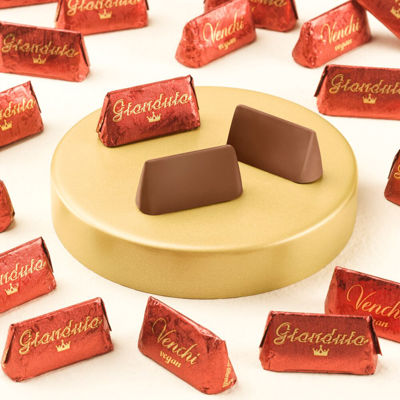
The theobroma cacao tree and its peculiarities
Theobroma cacao is the scientific name for the cacao tree and literally translates to "food of the gods." Cocoa is one of the main ingredients for making chocolate and, in the form of cocoa powder, is also widely used to make sweet treats and cakes. Despite being such a well-known food product, not everyone is familiar with where cocoa comes from or with the extraordinary characteristics of cacao trees.
The Cocoa plant: Where does cocoa come from?
The cacao tree is a small evergreen tree in the Malvaceae family, native to the tropical regions of Central and South America. Its drooping, oblong leaves are shiny and bright green. Cocoa mass and cocoa butter are obtained from the seeds of its fruit (cocoa pods) before being used to make chocolate.
Cocoa plantations require a special humid climate to grow, with temperatures between 68 and 86F, which are typically found near the equator. The plants need consistent warmth and should be protected from direct sunlight. In fact, they are often sheltered by taller plants, like banana trees, in a technique known as "sombramiento", and kept at a low height to facilitate harvesting.
While cocoa trees bloom year-round, only one in every hundred flowers develops into a pod. The plants yield fruit twice a year, but the timing varies depending on the region (commonly in March and October).
Where are cacao trees found?
The cocoa plant is native to the upper Amazon basin (Brazil, Colombia, and Peru). These trees were also grown in Mexico long before America was discovered, and the seeds were used as a form of currency.
Although Christopher Columbus brought cocoa beans back to Europe in 1502 at the end of his fourth voyage, cocoa didn’t gain popularity there until about twenty years later.
Today, cocoa is grown by 40-50 million farmers in more than 50 countries. Ninety percent of the world's cacao comes from small family-owned farms, while only about 5% is grown on larger commercial plantations.
Much like grape varieties in wine production, cacao beans possess different flavors and nuances depending on the variety and the terroir (the environment where they’re grown):
The Forastero variety produces a smoother, more rounded pod with a thicker shell, and the resulting cocoa has a classic chocolate flavor.
The Criollo variety produces a longer, knobbier pod with a thinner shell, and its cocoa offers more floral, fruity and nutty notes.
The Trinitario variety is a hybrid of the Forastero and Criollo.
What are the uses of theobroma cacao?
The Theobroma cacao offers a bounty of natural properties. The beans from the tree are transformed into everything from cacao drinks to cocoa butter and, of course, chocolate. But the tree’s uses extend far beyond confectionery.
The fruit of the cacao tree has been a popular delicacy in South America for centuries. It’s often used to make juices, smoothies, and even alcoholic beverages.
In addition to food, cacao has long been cultivated for medicinal purposes, especially in South America. It has anti-inflammatory properties, soothes irritated skin and burns, and supports the nervous system. The wood of the cacao tree to produce paper, clothing, and even housing materials.
What does the cacao fruit taste like?
When you break open a cacao pod, you'll be stunned by the magnificent floral scent of the cacao fruit.
However, the taste of the cacao fruit is quite different from chocolate. It has a fleshy texture and a tropical, sweet, and acidic flavor that’s often compared to lychee. As with all fresh produce, the flavor of the cacao fruit varies depending on the climate and soil where it’s grown.
Discover all the ways cocoa can help your well-being
When enjoying your favorite treat also helps boost your health, what's not to love? Chocolate makes life sweeter, lifts your mood, and even sharpens your mind. Plus, it’s easy and delicious to add more cocoa to your diet.
The theobromine in chocolate acts as a stimulant, energizing your body and mind in natural ways. The Aztecs understood these powerful properties well, often preparing a cocoa-based drink for their soldiers before heading into battle.

